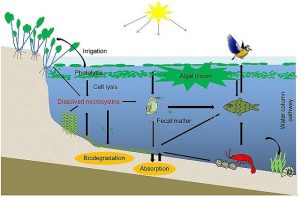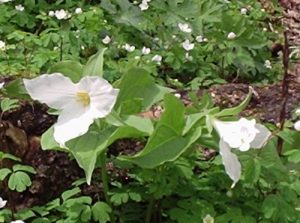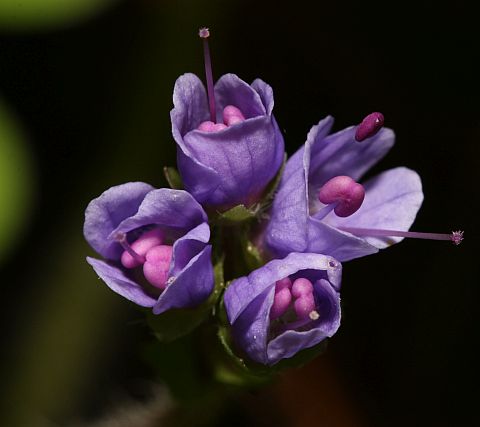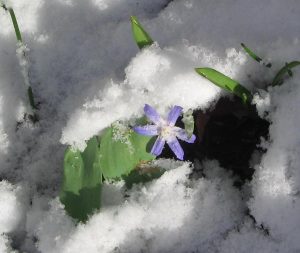By Gary Swick, President
Resilience and Hope
In nature, winter is a time of conserving resources, relying upon storage, and enduring scarcity and hardship. Surviving winter requires physical resilience and hope. We have just emerged from a natural and cultural winter like none of us have ever experienced. As we travel the long crossover from winter to spring, we are hopeful for better conditions and the cusp of abundance.
Timing is Everything
Spring is also a risky time, as timing sometimes is everything. It is a version of gambling for a plant which sends up sprouts when a heavy frost is still possible, or a bird that arrives home from winter migration before food is readily available, leading to losses. Nature has centuries of data that signal timing cues to plants and animals. These include stable conditions like length of day. But with a changing climate, other cues are now unstable.
Calendar Shift
Phenology is “the study of cyclic and seasonal natural phenomena, especially in relation to climate and plant and animal life.” Sixty years ago, Aldo Leopold shared his phenological perspective in his legendary book, “A Sand County Almanac“. It contains essays about what was happening on his central Wisconsin property each month and how those lessons apply to humans. Subsequent records indicate that Spring now arrives 17 days earlier in Baraboo County, Wisconsin than it did sixty years ago. Among the data points are dates of bud emergence, blooming time, migration patterns, and frog love songs from the marshes. Are plants and animals reacting to the changing conditions from a changing climate? It appears that the answer is yes.
“…phenology is a very personal sort of science. Once he learns the sequence of events, the phenologist…may even fall in love with the plants and animals which so regularly fulfill his predictions.”
-Aldo Leopold
Diversity Leads to Stability

Ecosystems are complicated. It is not just the interactions between (biotic) organisms, but also the interactions and influences of the sometimes highly variable (abiotic) factors like temperature, amount of moisture, and water levels. Things out of synch can lead to not just individual mortality but a population collapse. Some plants may rely on a specific insect for pollination. If the plant is not in bloom when that insect is in abundance, it could be devastating. This could potentially reduce competition for other plants resulting in an influx of new species. It is complicated, but this example reinforces the ecological law that diversity leads to stability.
A Carpet of Bright Colors

Inhabiting deserts and mud flats ephemeral plants have short-lived life cycles that have survival mechanisms for conditions like drought and flooding. In the Fox River valley, woodlands are the home of the spring ephemerals whose resource challenge is sunlight. Spring-flowering ephemerals are plants that only last a brief time and don’t die but they do go dormant and disappear from view shortly after they stop flowering. The first hint of warm weather triggers spring ephemerals to grow and for a brief period a forest’s floor can be a carpet of bright colors. This very exciting event occurs in Fox River woodlands every year. The flowering plants on a forest’s floor know that most of their growing season will be in shady conditions after the canopy trees burst their buds open and reveal their leaves. Once the warm weather takes hold, ephemerals usually wither above ground while their roots continue growing under the soil, conserving energy for the following year.
Sky Dance
Along with the forest’s brief art show are the concert performances of the mating calls of amphibians in the wetlands. Birds’ love songs can be heard in every habitat in our watershed. Nature has a calendar and spring is the season of romance. My favorite is the amazing show of the American Woodcock. The plain-looking and chubby male beeps a few times then becomes an aerial acrobat to impress his on-lookers. Annually, naturalist-led hikes to view this spectacle at dusk are available. Check your local nature education provider for details.
Excitement Awaits You
The past year’s pandemic conditions drove record numbers of the public into nature preserves and onto the trails. Increases in sales of fishing licenses, bicycles, and kayaks are true evidence of that. People enjoyed and discovered the many physical and emotion benefits of outdoor recreation. The process of spring emerging in our watershed seems to take a very long time but the various components are unveiled on a rather brief schedule. This makes outdoor exploration in the spring even more exciting.
The Act of Observing
Observing nature is a little different from just being outside. On the trail, moving slowly helps to notice little things. Where permitted, traveling off the trail is where big discoveries, such as mushroom finds occur. Experiencing the sky dance of the Woodcock or the marshland melodies may be evening experiences. Even on well-traveled trails in the middle of the day, birds are usually abundant, however seeing them requires looking carefully around you. To assist, some equipment may enhance your experience. Binoculars offer distance and detail assistance and your phone can help you document visual and audio gifts from nature. Field guides may bring more understanding and appreciation to your discoveries. Finally, consult the weather forecast. As many of us like to say, “there is no bad weather, only poor clothing choices.”
Call for Caution
Nature has hazards so use caution in your explorations. In addition to beautiful blooms, poison ivy is also emerging so avoid little red leaves running up tree trunks. Ticks have become active so at the end of your journey make sure to check yourself and others. Many edible plants are part of the springtime bounty, but so are their poisonous cousins, so accurate identification of plants is essential for your health.
Start in Your Yard
Our public lands offer many discovery opportunities but your own yards can too. Now is a great time to make plans to bring native plants onto your landscape and encourage their companion insect and birds to follow. We will all benefit from creating more native habitat in our neighborhoods. Look for local workshops about this topic and upcoming plant sales for you to create your own garden of spring beauty. One of our friends, Northern Kane County Wild Ones, has a program called Start in Your Yard which offers many resources and frequently asked questions.
Enjoy your search for signs of spring.



